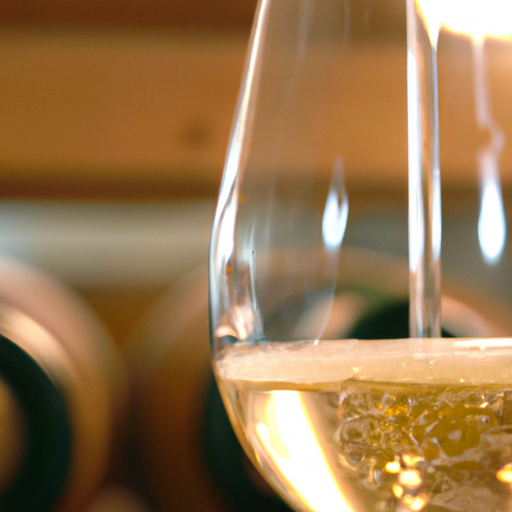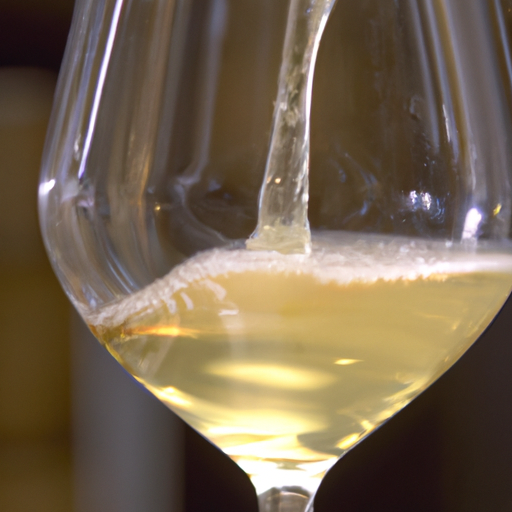
The Art of Blending: Crafting the Perfect Chardonnay Blend
Crafting the Ultimate Chardonnay Blend
Chardonnay is one of the most popular and versatile white wine grapes in the world. Its ability to adapt to different climates and winemaking techniques has made it a favorite among winemakers and wine enthusiasts alike. One of the keys to creating a truly exceptional Chardonnay is the art of blending. Blending different batches of wine allows winemakers to create a wine that is greater than the sum of its parts.
Blending is a technique that has been used in winemaking for centuries. It involves combining different wines, often from different vineyards or even different regions, to create a final product that showcases the best qualities of each component. When it comes to Chardonnay, blending can be particularly effective in enhancing the wine’s complexity and balance.
The first step in crafting the ultimate Chardonnay blend is selecting the base wines. These are the individual wines that will be blended together to create the final product. Winemakers typically start with a selection of wines that have been fermented and aged separately. These wines may come from different vineyards or different blocks within the same vineyard, each offering its own unique characteristics.
Once the base wines have been selected, the winemaker begins the process of blending. This involves tasting each wine and assessing its individual qualities. Some wines may have a rich, buttery texture, while others may have vibrant citrus flavors. The winemaker’s goal is to create a blend that combines the best elements of each wine, resulting in a wine that is greater than the sum of its parts.
To achieve this, the winemaker may experiment with different proportions of each wine. They may also consider the use of oak barrels during fermentation and aging, as this can impart additional flavors and aromas to the wine. The winemaker must carefully balance these elements to ensure that the final blend is harmonious and well-integrated.
Blending Chardonnay also allows winemakers to create wines with a consistent flavor profile from year to year. This is particularly important for wineries that produce large quantities of wine and want to maintain a consistent brand identity. By blending wines from different vintages, winemakers can create a wine that is consistent in style and quality, regardless of the variations in weather and growing conditions from year to year.
In addition to creating a consistent flavor profile, blending can also help to mitigate any flaws or imperfections in the individual wines. For example, if one wine has too much acidity, it can be balanced out by blending it with a wine that has a lower acidity level. This allows the winemaker to create a final blend that is well-rounded and enjoyable to drink.
Crafting the ultimate Chardonnay blend is a delicate and complex process that requires skill, experience, and a deep understanding of the characteristics of the individual wines. It is a true art form that allows winemakers to create wines that are unique and expressive. Whether you prefer a crisp and citrusy Chardonnay or a rich and buttery one, the art of blending is what makes these wines truly exceptional. So the next time you enjoy a glass of Chardonnay, take a moment to appreciate the craftsmanship that went into creating that perfect blend.
Exploring the Key Components: A Guide to Crafting an Exceptional Chardonnay Blend

Crafting the Ultimate Chardonnay Blend
Chardonnay is one of the most popular and versatile white wine grapes in the world. Its ability to adapt to different winemaking techniques and terroirs makes it a favorite among winemakers and wine enthusiasts alike. Crafting an exceptional Chardonnay blend requires a deep understanding of the key components that contribute to its unique character and flavor profile.
The first and most important component of a Chardonnay blend is the grape itself. Chardonnay grapes are known for their high acidity and wide range of flavors, which can include citrus, tropical fruits, and even buttery notes. The choice of grape variety and the specific vineyard where it is grown will greatly influence the final product.
Another crucial component is the oak aging process. Many Chardonnay blends undergo oak aging, which imparts additional flavors and aromas to the wine. The type of oak used, whether it be French or American, and the length of time the wine spends in the barrel, will determine the level of oak influence. Oak aging can add complexity and richness to the wine, but it must be done with care to avoid overpowering the delicate flavors of the Chardonnay grape.
Malolactic fermentation is another technique commonly used in Chardonnay blending. This process converts the tart malic acid in the wine into softer lactic acid, resulting in a smoother and creamier mouthfeel. Malolactic fermentation can also contribute to the development of buttery and toasty flavors, which are often associated with Chardonnay. However, it is important to strike the right balance, as too much malolactic fermentation can mask the natural fruit flavors of the grape.
The climate and terroir in which the grapes are grown play a significant role in shaping the character of a Chardonnay blend. Cool-climate regions tend to produce Chardonnays with higher acidity and more citrus and green apple flavors, while warmer regions yield wines with riper fruit flavors and lower acidity. The choice of terroir will depend on the desired style of the final blend.
Blending different batches of Chardonnay from various vineyards or even different vintages can also contribute to the complexity and balance of the final wine. Each batch may bring its own unique characteristics, and the art of blending lies in finding the perfect combination that harmonizes these elements. This process requires a keen palate and a deep understanding of the individual components.
Lastly, the winemaker’s skill and expertise are crucial in crafting an exceptional Chardonnay blend. The winemaker must carefully monitor and control each step of the winemaking process, from grape selection to fermentation and aging. Attention to detail and a commitment to quality are essential in creating a wine that showcases the best of what Chardonnay has to offer.
In conclusion, crafting the ultimate Chardonnay blend requires a careful balance of key components. The choice of grape variety, oak aging, malolactic fermentation, climate and terroir, blending techniques, and the winemaker’s skill all contribute to the final product. By understanding and harnessing these elements, winemakers can create Chardonnay blends that are truly exceptional. Whether you prefer a crisp and citrusy style or a rich and buttery one, there is a Chardonnay blend out there to suit every palate.
Mastering the Balance: Techniques for Creating the Ultimate Chardonnay Blend
Crafting the Ultimate Chardonnay Blend
Chardonnay is one of the most popular and versatile white wine grapes in the world. Its ability to adapt to different winemaking techniques and terroirs makes it a favorite among winemakers and wine enthusiasts alike. However, creating the ultimate Chardonnay blend requires a delicate balance of flavors and aromas. In this article, we will explore some techniques that can help you master the art of blending Chardonnay.
One of the key factors in crafting a great Chardonnay blend is understanding the characteristics of the grape itself. Chardonnay is known for its wide range of flavors, from crisp green apple and citrus to rich tropical fruits and buttery notes. It also has a natural acidity that can be either enhanced or softened depending on the desired style of the wine.
To create a well-balanced Chardonnay blend, it is important to consider the different components that can be used. These include grapes from different vineyards or regions, different clones of the Chardonnay grape, and even different winemaking techniques. Each component brings its own unique flavors and aromas to the blend, and finding the right combination is key.
One technique that can help in creating a balanced Chardonnay blend is blending grapes from different vineyards or regions. Grapes grown in different terroirs can have distinct flavors and characteristics. By blending grapes from different vineyards, winemakers can create a more complex and layered wine. For example, grapes from a cool climate vineyard might contribute crisp acidity, while grapes from a warmer climate vineyard might add ripe fruit flavors.
Another technique is blending different clones of the Chardonnay grape. Clones are genetically identical vines that have been selected for specific traits. Some clones might produce grapes with more citrus flavors, while others might have more tropical fruit characteristics. By blending different clones, winemakers can create a Chardonnay blend that has a wide range of flavors and aromas.
Winemaking techniques also play a crucial role in crafting the ultimate Chardonnay blend. For example, the use of oak barrels can add complexity and depth to the wine. Aging the wine in oak barrels can impart flavors of vanilla, toast, and spice, while also adding a creamy texture. However, it is important to use oak judiciously, as too much oak can overpower the delicate flavors of the Chardonnay grape.
Malolactic fermentation is another technique that can be used to soften the acidity of Chardonnay. This process converts the sharp malic acid in the grapes into softer lactic acid, resulting in a smoother and creamier wine. However, it is important to strike the right balance, as too much malolactic fermentation can make the wine overly buttery and lose its freshness.
In conclusion, crafting the ultimate Chardonnay blend requires a deep understanding of the grape’s characteristics and the use of various techniques. By blending grapes from different vineyards or regions, different clones of the Chardonnay grape, and employing different winemaking techniques, winemakers can create a well-balanced and complex Chardonnay blend. Whether you prefer a crisp and citrusy style or a rich and buttery one, experimenting with these techniques can help you create a Chardonnay blend that is truly exceptional.






